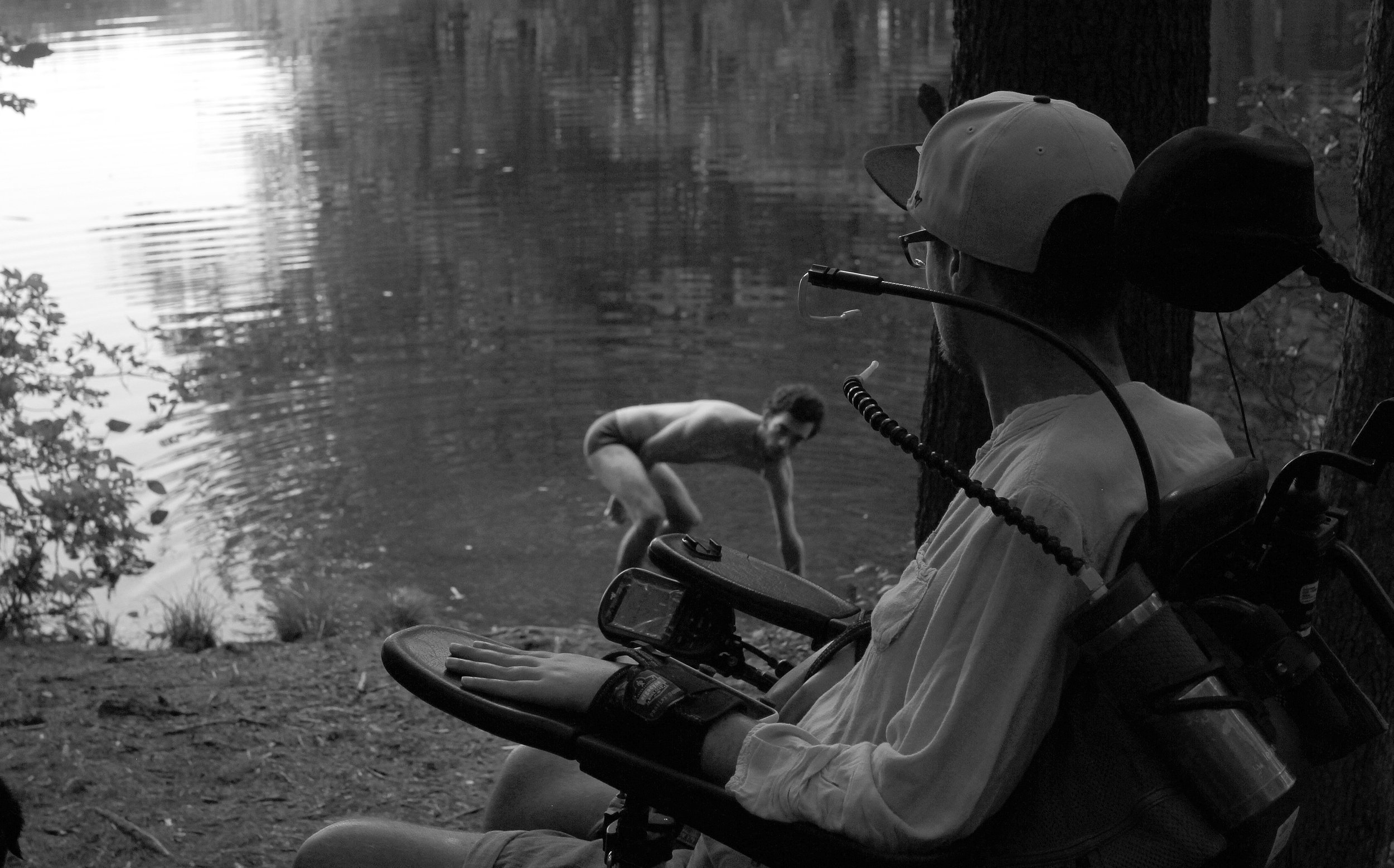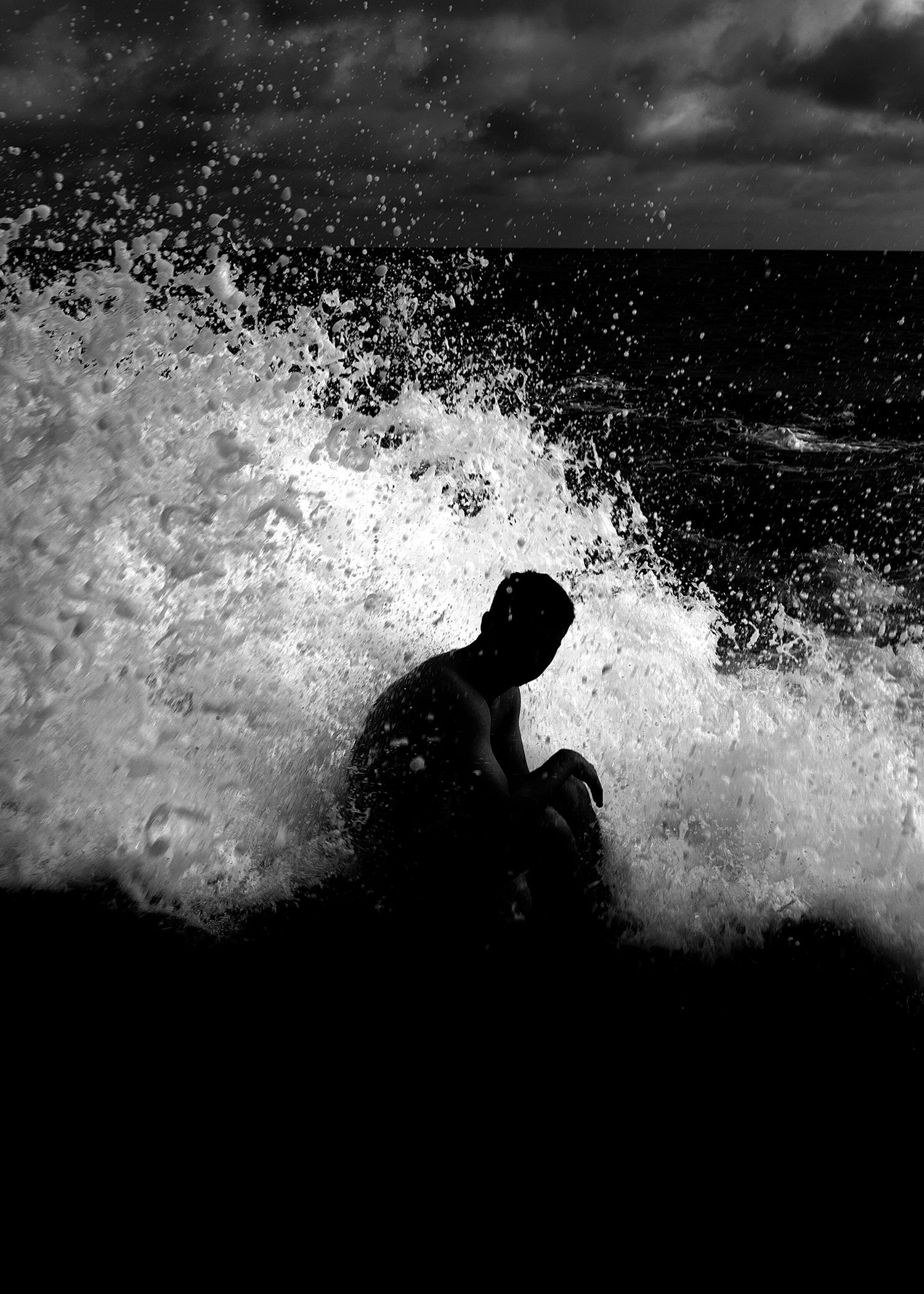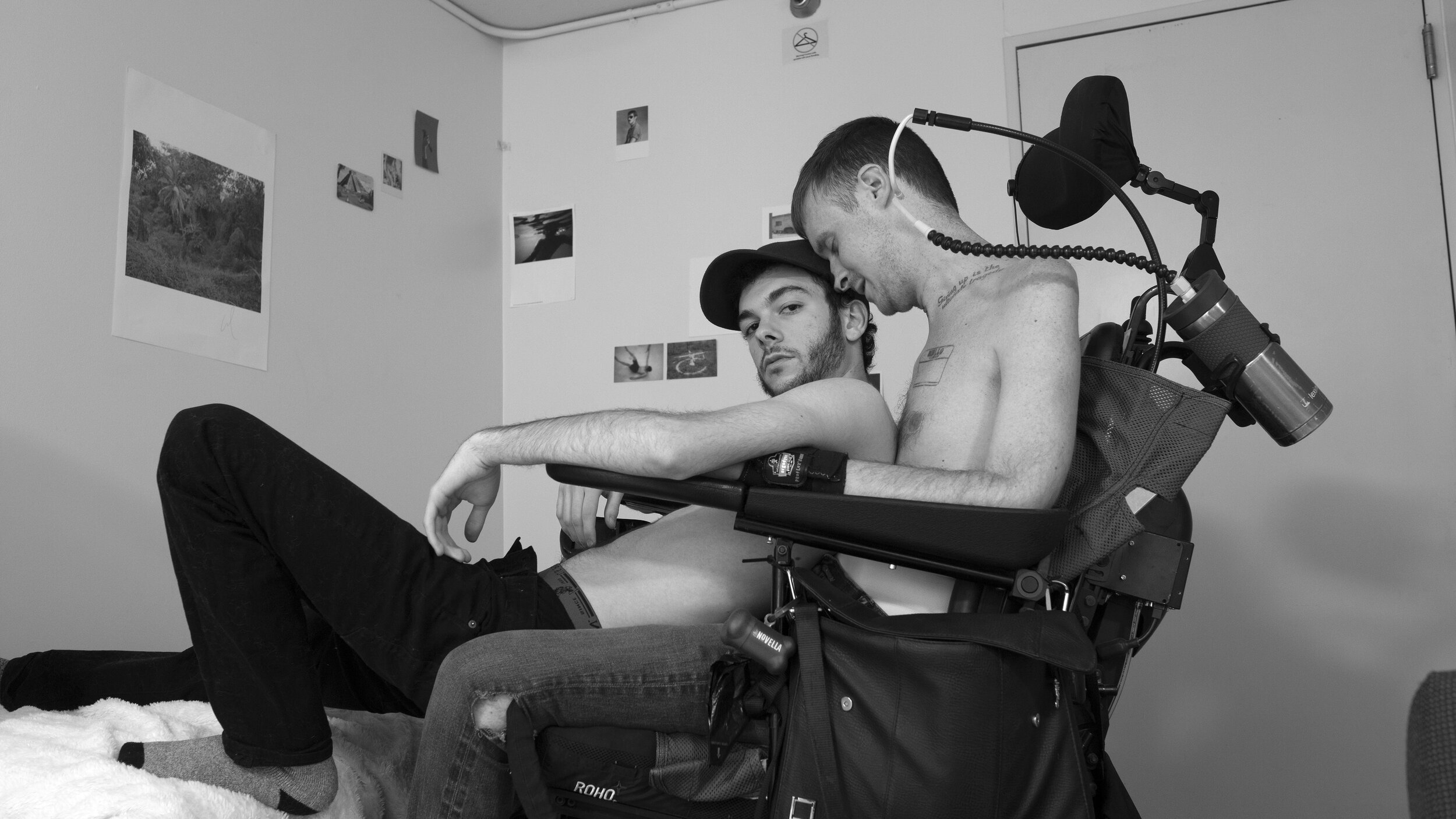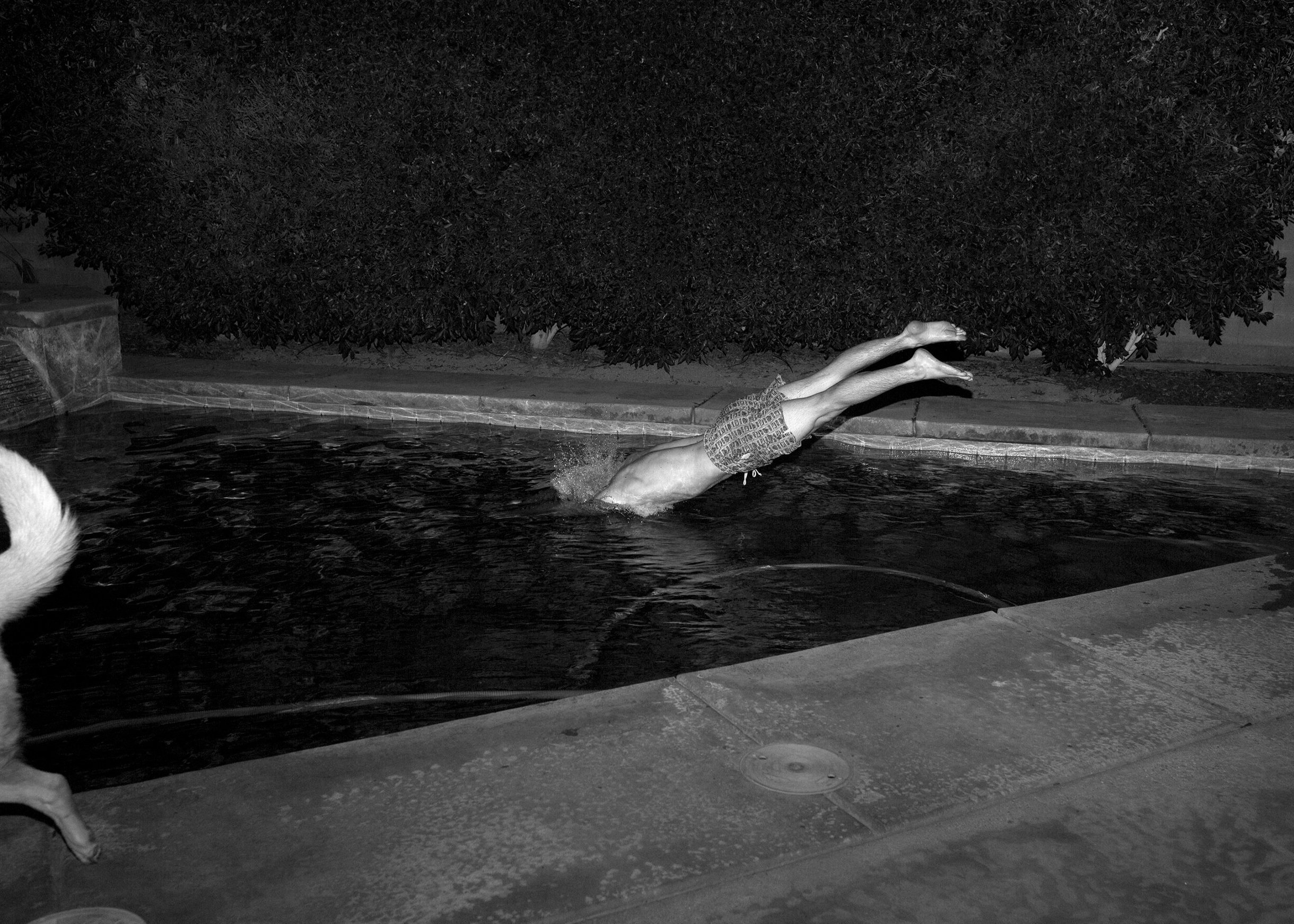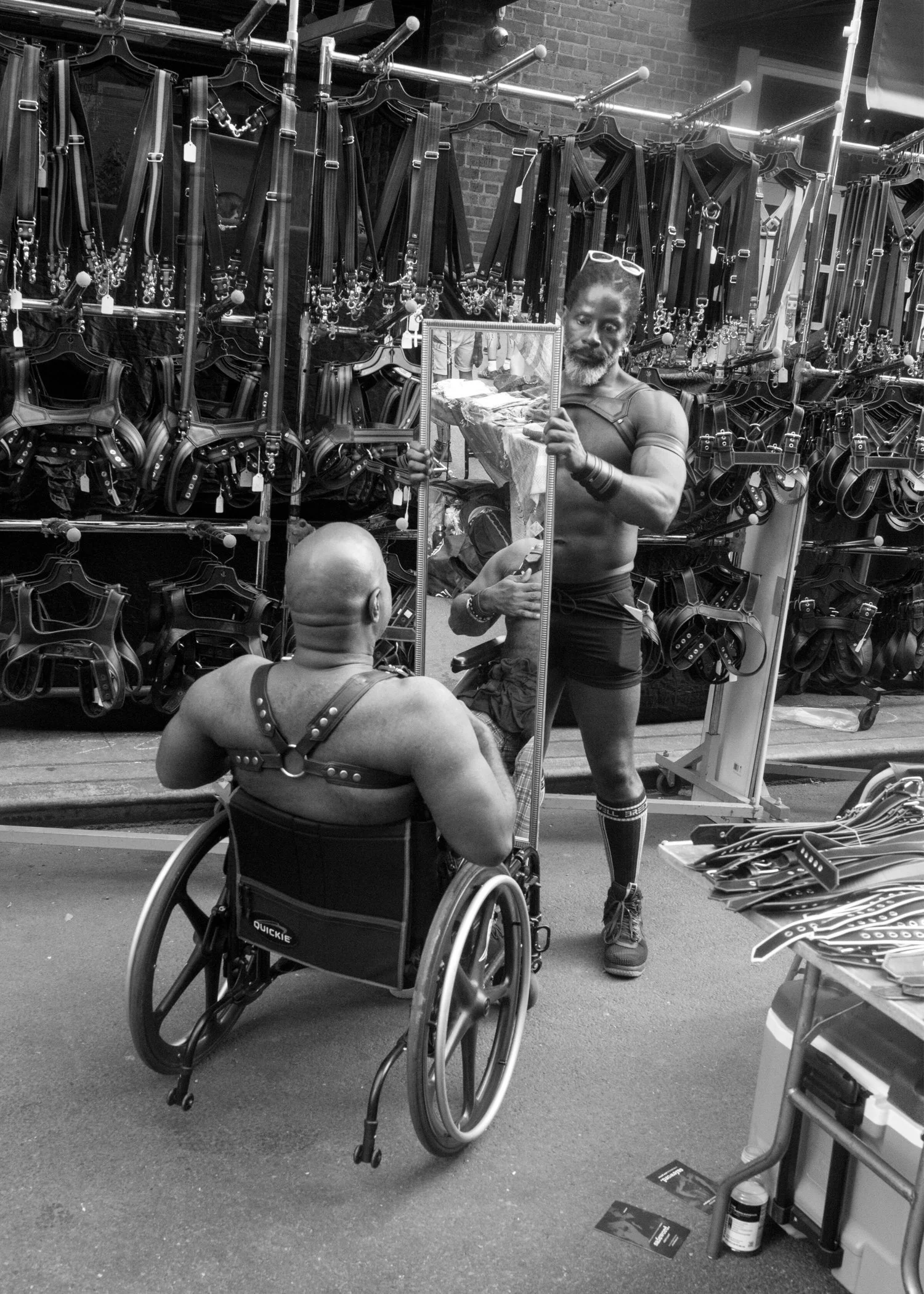On Joey Solomon’s Study of Cyclical Thoughts on my Leg
foam Magazine
issue #58, Talent 2021
Joey Solomon, Study of Cyclical Thoughts on my Leg, 2019 © Joey Solomon
Joey Solomon, Self After Second Tissue Biopsy, 2018 © Joey Solomon
“Apart from charity advertising, when did you last see a picture of a disabled person?” asks disability theorist and photographer David Hevey in an essay from his pioneering book The Creatures Time Forgot: Photography and Disability Imagery (1992). Nearly thirty years later, I am unable to easily answer his question. Throughout his text, Hevey repeatedly reminds the reader that the representation of disability in photography “has absented the voice of those at its center—disabled people.” Brooklyn-based Joey Solomon uses his own experience of disability and chronic pain as a lens through which to approach Study of Cyclical Thoughts on my Leg, an ongoing project that subverts and rewrites traditional narratives about the bodies, identities, and everyday lives of those with physical disabilities.
In May 2018—as he was nearing the end of his junior year at New York University’s Tisch School of the Arts—Solomon fell ill with a high fever that persisted for three weeks. When his parents took him to the hospital, an MRI revealed a tumor growing in his left hip. Upon his release 91 days later, Solomon could not walk and was suffering from post-traumatic stress, panic attacks, and insomnia. He was also grappling with how these recent physical and emotional realities would affect his life as a young, gay man. “I truly felt that I was grieving the loss of me,” Solomon said. “Like, I had died, and this was a new life.”
To begin examining the long-term implications of his hospitalization and condition, wheelchair use, and eventual ability to walk again, Solomon turns the camera on himself, producing self-portraits ranging from documentary-style to staged and performative. He explains, “my mind is overflowing with physical and emotional obsessions surrounding my left leg.” Direct pictures like Self After Second Tissue Biopsy (2018)—where Solomon lies in a hospital bed, his eyes barely open, sheathed in white and entangled in a network of tubes and cords—speak to the physicality and invasiveness of his ordeal. This image foreshadows the ways in which his identity becomes inextricably linked to this transformative experience. Representations of entanglement repeat throughout the project, as in Leg Sculpture (2015)—a blurred scene where arms and legs intertwine indistinguishably—or in the project’s namesake photograph which documents a whimsical, but profound performative gesture. Black tights almost entirely obscure Solomon’s face, head, arms, and shoulders, alluding to his all-consuming fixation on his leg. Other poetic photographs including Self Portrait as Sitting Duck (2019)— depicting the artist silhouetted, seemingly on the brink of being crushed by a powerful wave—insinuate feelings of turmoil, powerlessness, and vulnerability. Solomon’s use of the camera proves not only personally restorative and therapeutic, but also serves as a vehicle for examining the intersection of disability and sexual desire.
By including other subjects such as his friend Robert Andy Coombs, a fellow photographer who is gay and quadriplegic, Study of Cyclical Thoughts on My Leg expands beyond Solomon’s personal story. In Portrait of Robert Andy Coombs and I in my dorm (2019), a shirtless Solomon reclines in Coombs’ lap, directly gazing into the camera’s lens as an invitation for us to engage with this scene; Coombs, also shirtless, gently rests his head on Solomon. An underlying carnality blends with tenderness here, offering both a new way of seeing disability and also seeing beyond it. Two other striking portraits of couples further the narrative of intimacy and sexuality within the lives of wheelchair users. Solomon’s sensitive, empathetic, and unflinching gaze presents us with empowered bodies that rebuke stereotypes about those living with physical disabilities. The men in these pictures assert their bodies as sites of desire and physical connection. Transcending depictions of physical disabilities, his pictures are about the exchange of touch and gaze, and about reclaiming sensual identity. By integrating these kinds of images into our visual culture, Solomon helps to expand the medium’s often narrow and less representative canon.
Solomon credits Coombs with “giving me wisdom and perspective on living life with new bodily rules.” I would also suggest Solomon’s photographic practice plays a pivotal role in how he disentangles, manages, and processes his past, present, and ongoing experience, helping to shape his identity and lifestyle moving forward.



